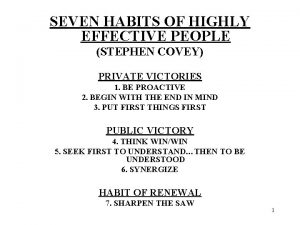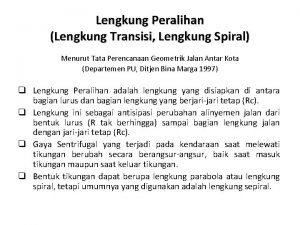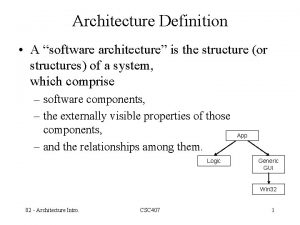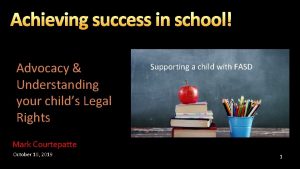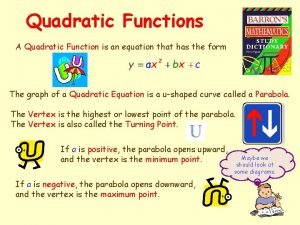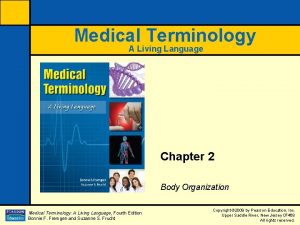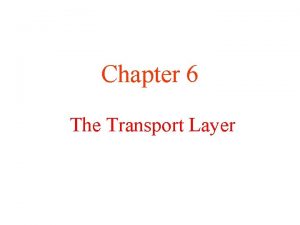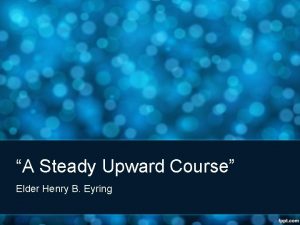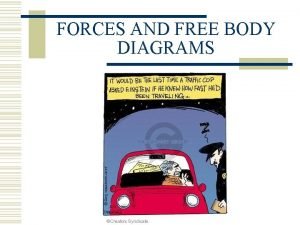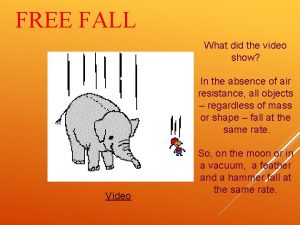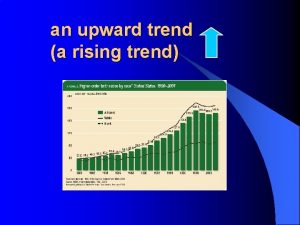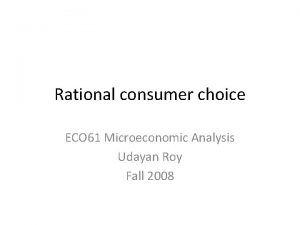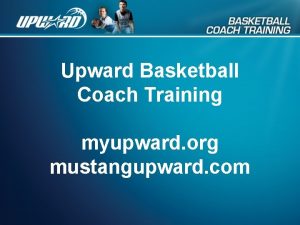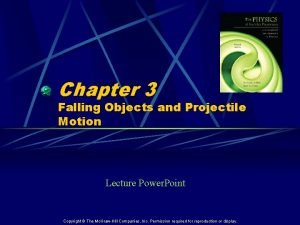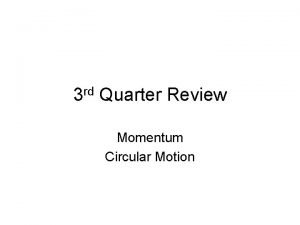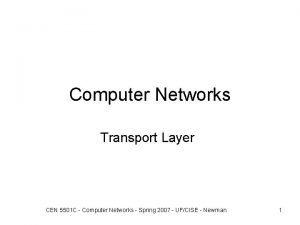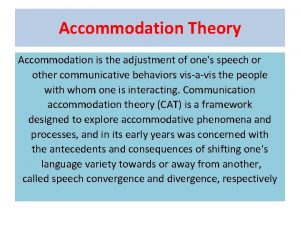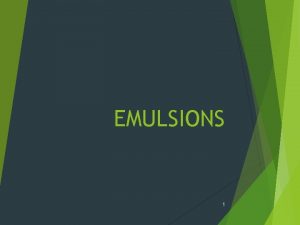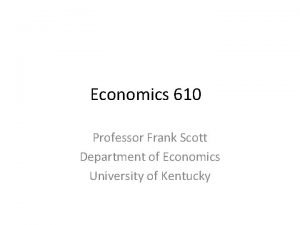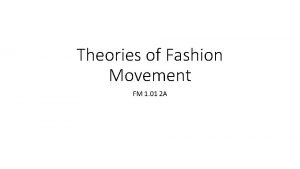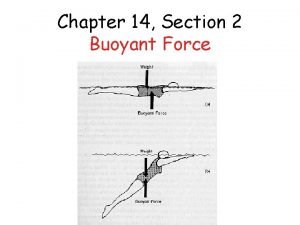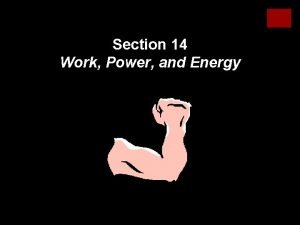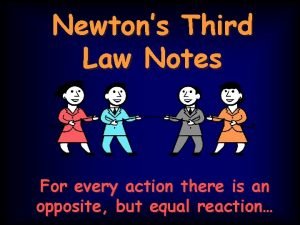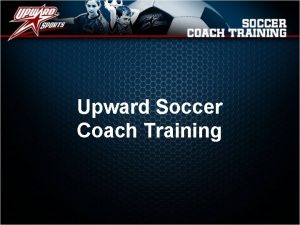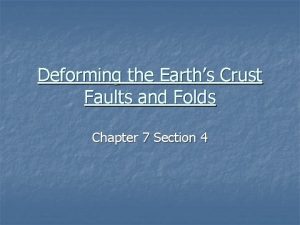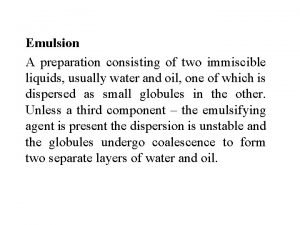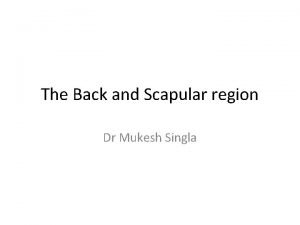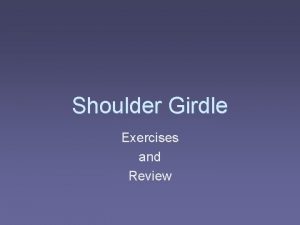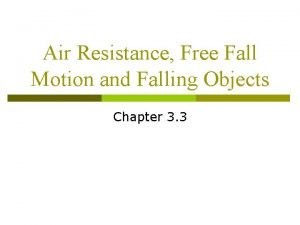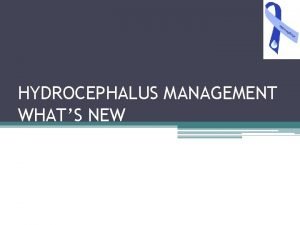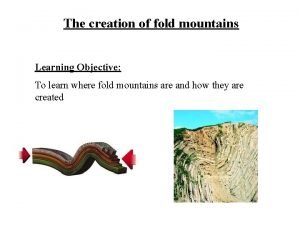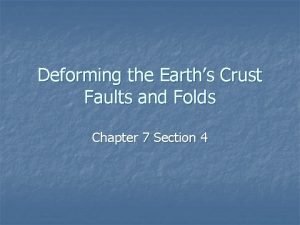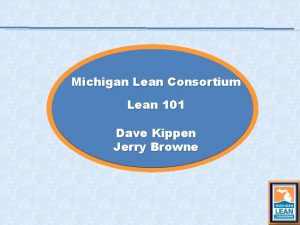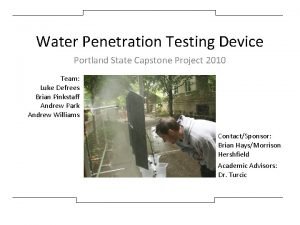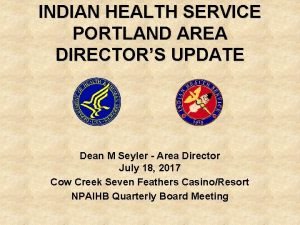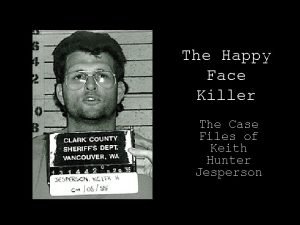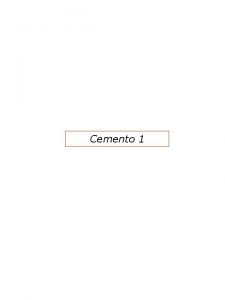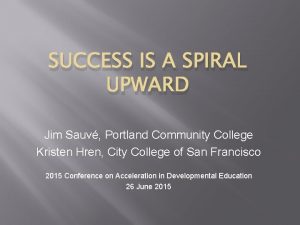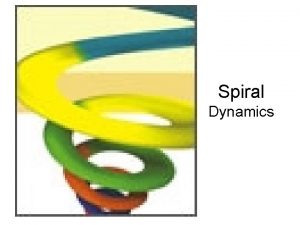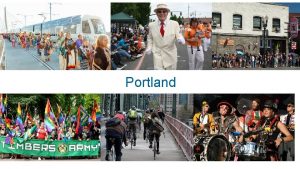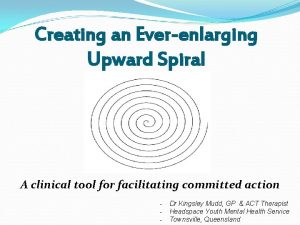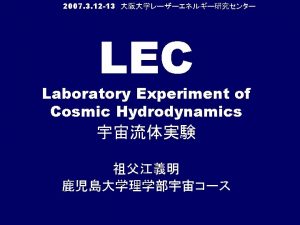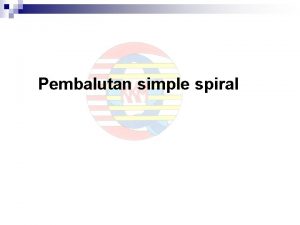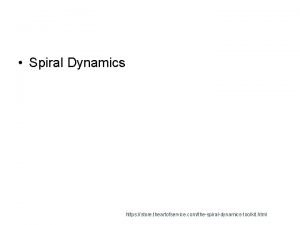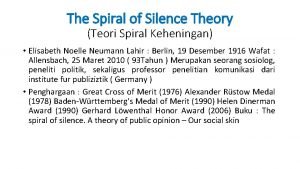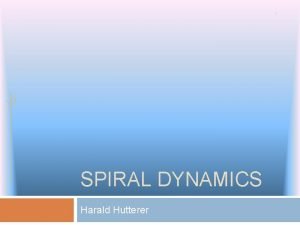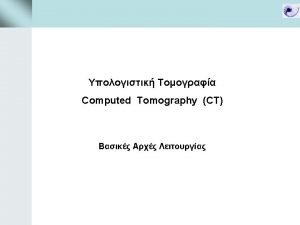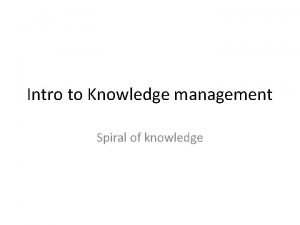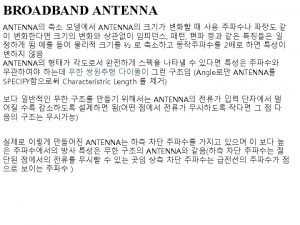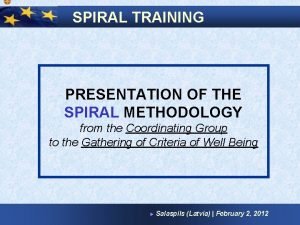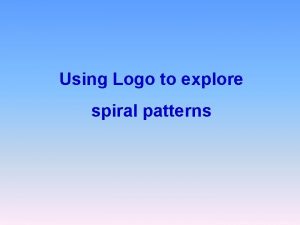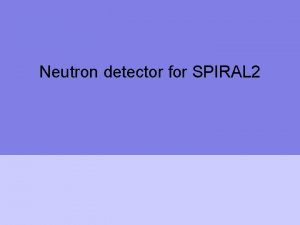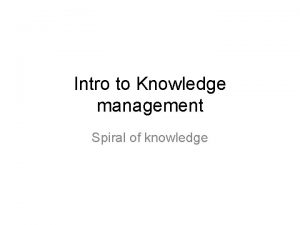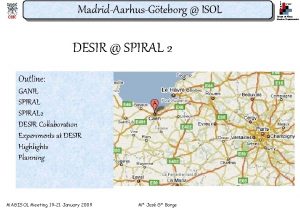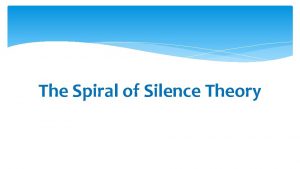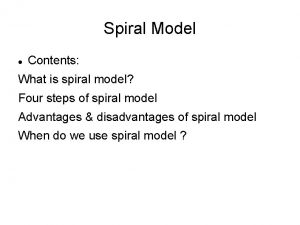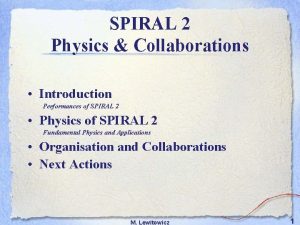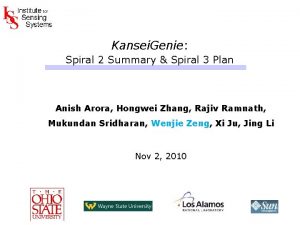SUCCESS IS A SPIRAL UPWARD Jim Sauv Portland




















































- Slides: 52

SUCCESS IS A SPIRAL UPWARD Jim Sauvé, Portland Community College Kristen Hren, City College of San Francisco 2015 Conference on Acceleration in Developmental Education 26 June 2015

Key Features of CCSF Model (I) ENGL 9293 (at completion: 1 level below transfer) • 6 unit intensive reading and writing course • Upon completion, students can take ENGL 96/1 A • Classroom Meeting Options: Three times a week, 2 hours per meeting – Four times a week, 1. 25 hour per meeting – Two times a week, 3 hours per meeting – • • • ENGL 961 A (at completion: passed freshman composition) 6 unit intensive reading and writing course Upon completion, students earn AAdegree/transfer- level credit Classroom Meeting Options: Three times a week, 2 hours per meeting – Two times a week, 3 hours per meeting –

Key Features of CCSF Model (II) � Each class is built around a Driving Question � Courses are organized around a driving question that students explore from multiple writing and reading stances over the course of the semester � Sample driving questions: “Is Technology Making Our Lives Better? ” “How do we create change in our community? ” “How does food shape our identity? ” “Does the American Dream exist or is it only a dream? ” “Where is utopia—and how do we get there? ” “Why are we so attracted to monsters? ”

Key Features of CCSF Model (III) � Based on Project-Based Learning � Students complete between 3 -4 projects that focus on different aspects of the driving question � Projects are divided into steps that help students build towards the final draft � Steps vary based on instructor content, course level and student needs � Culminates in a Semester Project with a traditional research-based paper or a creative project � Students also give a presentation based on the Semester Project

The Success from Day One Has Been Overwhelming � � � Since Spring 2011, more than 7, 500 students have enrolled in at least one of the accelerated courses. Students who take the Developmental Accelerated English 9293 are more than twice (2. 3 times) as likely to finish Freshman Composition than students who take the traditional 4 course sequence Students who take English 961 A are 1. 5 times as likely to pass Freshman Composition than students in the traditional two course sequence.

From the Outset � The goal wasn’t just to shorten an already absurdly long course sequence. � Another primary goal was to transform the ways in which faculty taught developmental and transfer-level reading and writing.

Most Writing and Reading Instruction in Colleges is Ineffectual � Norton Grubb, Basic Skills Education in Community Colleges: Inside and Outside of Classrooms (2012) �A majority of Basic Skills courses in community colleges employ “remedial pedagogy” � Somewhat shocking since the bias in the study was looking at colleges supposedly employing more progressive practices

What is “Remedial Pedagogy”? (I) � “The basic approach has also been called partto-whole instruction, emphasizing subskills (‘the parts’) that presumably are assembled into broad competencies like the comprehension of varied texts, an understanding of mathematical procedures and thinking, and the ability to write in several genres (‘the whole’)” (52).

What is “Remedial Pedagogy”? (II) • • • An emphasis on getting the right answer, rather than any conceptual understanding of why an answer is correct, or how to develop alternative “right” approaches to solving a math problem, writing an essay, or interpreting a reading passage. Instruction is rarely contextualized for or to students An emphasis on presentation and “coverage”— covering lessons without checking for understanding or deeper mastery (54)

More National Data � � � Melzer (2009, 2014) looked at over 2, 100 writing assignments drawn from colleges and universities. 66% of all assignments were expository/ informational in nature. “It’s important to emphasize that much of the informative assignments in my study present students with an extremely limited view of academic discourse, asking them simply to display the ‘right’ answer or the ‘correct’ definition to the instructor through a recall of facts” (245).

An Example of “Remedial Pedagogy”: Teaching Writing Focused on Rhetorical Modes � An absence of rhetorical purpose and skills other than adhering to the modal conventions set forth by the teachers and textbooks. � Modal divisions and the modes become the purpose: the point of a description essay is to describe something; the purpose of a compare and contrast essay is to compare and contrast something, and so on. Such assignments place emphasis on mode and neglect content and higher-order thinking. � When taught as separate prescribed “essays, ” these modes discourage students from writing from and within a combination of rhetorical strategies. Students learn to be more concerned with adhering to modal prescriptions than with engaging in organic, authentic and purposeful writing.

The Modes Have Been Passé for Decades � “The modes of discourse controlled a good part of composition teaching during one of rhetoric's least vigorous periods, offering in their seeming completeness and plausibility a schema of discourse that could be easily taught and learned. For years the fact that this schema did not help students learn to write better was not a concern, and even today the modes are accepted by some teachers despite their lack of basis in useful reality. Our discipline has been long in knuckling from its eyes the sleep of the nineteenth and early twentieth centuries, and the real lesson of the modes is that we need always to be on guard against systems that seem convenient to teachers but that ignore the way writing is actually done. ” --Robert Connors, “The Rise and Fall of the Modes of Discourse” (1981) (Emphasis obviously added)

More Data: From One College (I) � � Portland Community College Assessment Spring 2015 Looked at 57 different English essay assignment portfolios 15 different assignment sequences This was for a Developmental Writing course one level below transfer.

More Data: From One College (II) � Rhetorical Modes-based assignments dominated (65. 1% of all assignments). � Many of these assignments were straight out of course textbooks. � In these three-four essay portfolios, an early essay assignments connected with at least one later assignment only 16. 3% of the time.

Stealthy, Deadly Assumptions: Remedial Pedagogy Defers “College Level” Work to Some Future, Indeterminate Point • It rarely provides students with readings, assignments, and course focal points that traffic in the ideas and elements of “college level” reading, thinking, and writing. • Students are treated as if they are fragile and will break when they encounter a college-level text or idea or task.

Mike Rose, “The Language of Exclusion’ (1985) � “It is somewhat curious, then, that a behaviorist approach to writing, one that took its fullest shape in the 1930 s and has been variously and severely challenged by the movements that followed it, remains with us as vigorously as it does. It is atomistic, focusing on isolated bits of discourse, error centered, and linguistically reductive. It has a style and a series of techniques that influence pedagogy, assessment, and evaluation. We currently see its influence in workbooks, programmed instruction, and many formulations of behavioral objectives, and it gets most of its airplay in remedial courses. It has staying power” (343).

What We Need Pedagogies that � Assume students can handle college-level work � Facilitate a learner-centered classroom � Allow students to build upon skills and ideas recursively � Offer students options and choices for inquiry and discovery � Seek to support, exploit, and maximize student strengths and abilities

Spiral Learning: Its History (I) � A theory first promulgated by Jerome Bruner in 1960. � Like Bloom’s Taxonomy, the spiral learning framework is ascribed to Bruner but it is a synthesis of many minds.

Spiral Learning: Its History (II) � � � In 1959, at Woods Hole on Cape Cod, a group of 35 scientists, scholars, and educators met to discuss how to improve science education. Over ten days, important themes, concepts, and ideas emerged that were to have major implications not only for science education, but for education in general. Bruner’s book, The Process of Education, was written to provide an account of the major themes and conclusions that emerged from that conference.

One of Bruner’s Core Claims � “The first object of any act of learning, over and beyond the pleasure it may give, is that it should serve us in the future. Learning should not only take us somewhere; it should allow us later to go further more easily…The more fundamental or basic is the idea, the greater will be its breadth of applicability to new problems” The Process of Education (17 -18).

Functions of Spiral Learning 1) It’s a sequencing strategy for designing curriculum and a course. 2) It’s also a pedagogical strategy.

What is a “Spiral” Curriculum Design? (I) Fundamental ideas, concepts, and skills are constantly revisited and reexamined in different ways and forms (spiraling forward/backward or up/down). As students return again and again to these ideas, concepts, and skills, they build on them, working with them in more complex ways, understanding them more fully, and making them their own.

What is a “Spiral” Curriculum Design? (II) � � � Bruner argues that subjects, topics, and skills must be presented according to the structures of the academic disciplines which are the essence and reflection of accumulated human curiosity. “In a word, the best introduction to a subject is the subject itself” The Relevance of Education (1971): 60. Example: A student learning history is treated as a historian inquiring into the issues and problems of history.

What is a “Spiral” Curriculum Design? (III) Bruner assumes that every student has the capacity to learn the subject or skill. Every student is a proto- or apprentice expert. “There is no difference in kind between the man at the frontier and the young student at his own frontier, each attempting to understand. Let the educational process be life itself as fully as we can make it” On Knowing (1979): 126.

What is a “Spiral Pedaogy”? � � Readings, concepts, ideas, and tasks used early in the term are purposefully present in later assignments In a sense you are jump-starting creation of schemata—”units of knowledge”--that draw upon what they know Assignments get more complex, involve more Higher Order Thinking skills as the term moves on It’s a model that allows for and encourages recursion in learning

The Spiral of Student Experience

The Driving Question is the “Spine” for the Class � � � The question should possess some emotional force, intellectual “bite” or “edginess. ” It invites students into ongoing conversations and debates about the issues or ideas it touches upon. The question should be open-ended, possible to contend with, arguable. It must be complex enough to house multiple perspectives and multiple possible answers. The question should be linked to evidence and data within a field or discipline (or multiple fields or disciplines). There are resources readily available to a college student in order to pursue answers. From Jeffrey Wilhelm, Engaging Readers & Writers with Inquiry (2007)

A Note about Why a “Class Theme” Is Insufficient � � � While a theme offers focus to a class, it doesn’t model critical inquiry Themes like “Social Justice” or “Women in Film” are interesting, but they are fragmentary ideas. Our students already know how to think in fragmented terms! We want them to be able to think and pose ideas that are complete sentences and whole thoughts.

Going Beyond “Theme”— Building the Class Around a Driving Question (I) � “Thinking is not driven by answers but by questions. ” � “Questions define tasks, express problems, and delineate issues. Answers, on the other hand, often signal a full stop in thought. ” “The Role of Questions in Teaching, Thinking and Learning”

Going Beyond “Theme”— Building the Class Around a Driving Question (II) � Working from and with powerful questions pushes students to become more independent learners. � “Once you have learned how to ask relevant and appropriate questions, you have learned how to learn and no one can keep you from learning whatever you want or need to know. ” Neil Postman and Charles Weingartner, Teaching as a Subversive Activity (1971)

Exercise #1 � “Finding the Focus” (Green Sheet) � Brainstorm a driving question that is open-minded, inquiry-based and requires higher-level thinking skills. Refer to the Blue Sheet handout (“Criteria to Shape and Develop It, ” “A Refining Protocol”) for more driving question parameters.

The Evolution of a Driving Question Semester 1: What does it mean to be “green”?

Semester 2: Are we headed towards environmental collapse?

Semester 3: Is Denial Killing Us?

Its Current Form (Fall 2015): How does psychology affect our environment?

What have I learned? � � Great ideas benefit from intentional design. Foundational understanding builds more confident students. � Identifying an opening text introduced in the first two weeks of class provides a solid foundation and can be revisited. � Choosing engaging full-length texts excites student interest and inquiry and fits into thematic “spiral”. � Try not to bum out your students with your question. Life is hard enough.

How to Create Student Experts? � � Find core texts that challenge students, encourage inquiry, and create multiple avenues for independent investigation. Let students grapple, interpret, and run with the text. Assign low stakes writing, allow for in-class revision, and give meaningful feedback. Embrace the mess!

Structural Components � Driving Question: � Inquiry-based question that students explore through multiple reading and writing stances over the semester � Project-based Structure: � 3 -4 research-based projects � Reoccurring steps for each project Project Plan/Proposal Reading Journals Annotated Bibliography Peer Review Revision Review Self-reflective cover letter

3 rd research project integrating course concepts Independent research Culminating full length text Major revision of Essay #1 or Essay #2 Reflection on writing/research process 2 nd research project using previous texts and research Full length text with integration of opening text concepts Guided primary and secondary research 1 st research project using opening text concepts & primary research Student reflection on opening text Guided primary research Opening Text

Project #1: What are our attitudes and behaviors towards the environment? � � � 4 -5 page essay “Environmental Attitudes and Behaviors Across Cultures, ” P. Wesley Schultz Environmental attitudes and behaviors autobiography Guided primary research using personal interviews Individual conferences Project Plan Essay Outline MLA Works Cited Peer Review Revision Review Self-reflection/metacognitive Cover Letter

Project #2: Why do we consume, where does it go and what is left behind? � � � 5 -6 page essay Consumption Log and Response “Can Psychology Help Save the World? A Model for Conservation Psychology, ” Susan Clayton and Amara Brook Garbology, Edward Humes Revisit Schultz Reading Journals Guided secondary research using the web and the academic databases Project Plan Annotated Bibliography Peer Review Revision Review Self-reflection/metacognitive Cover Letter

Revision Project � � � � 6 -7 page major revision of Project #1 or Project #2 Review: Read comments on the original essay and the rubric carefully Respond: Compose a 2 page response that describes errors, understanding of those errors and approaches to avoiding them Individual conferences Revisit: Create a specific set of goals for revision in an outline or typed list Rethink: Add at least 2 more pages to the original essay through additional research, revision and expansion of original ideas Peer Review

Project #3: Who is at fault in a natural disaster? � � � 8 -10 page essay with an optional creative project Excerpt from Collapse, Jared Diamond Dynamics of Disaster, Susan W. Kieffer Revisit Schultz & Clayton and Brook Reading journals Independent primary and secondary research Project Plan Annotated Bibliography Peer Review Revision Review Self reflection/metacognitive cover letter

Spiraling Out � � � Spiral learning is both structural and pedagogical The spiral allows for multi-directional movement All skills can be built with the spiral in mind: � Reading � Essay structure � Sentence structure/grammar � Research � All levels and types of critical thinking � Self-reflection

Exercise #2: Quick Reflection Come back to your brainstormed Driving Question � � � Is your question sufficiently inquiry-based? Does it make sense from a student point of view? Can you begin to see Writing Projects and intellectual problems students can develop and pursue?

Exercise #3 (Part One) Brainstorm Texts that Inspire Inquiry (Green Sheet) Brainstorm some full-length books that can act as the core reading component of the course. These books should clearly and thematically connect to the course question.

Exercise #3 (Part Two) Brainstorm Texts that Inspire Inquiry (Green Sheet) Brainstorm some powerful opening texts that can be taught within the first two weeks of your course. These texts should resonate throughout the course and students should be able to keep coming back to them, even for the final project/paper.

Some Powerful Outcomes and Pay-Offs for Students (I) � � � Voice and Choice: The Inquiry/Project. Based Learning focus allows students to pursue unique areas of interest and take ownership over the research and inquiry process. Students become “mini-experts” in basic theories, aspects, and the discourse related to the Question. Cohesion and coherence are promoted and reinforced from assignment to assignment.

Some Powerful Outcomes and Pay-Offs for Students (II) The Spiral Helps the Affective and the Social Strengthen and Reinforce Cognitive Skills and Processes “Programs and classrooms that convey a sense that you matter, that your mind matters, foster achievement where achievement seemed unlikely. To feel intellectually cherished – which also means being intellectually challenged and pushed – enables people to be smart. ” – Mike Rose, "Writing in and Out of Jail"

Some Powerful Outcomes and Pay-offs for Faculty (I) � Stronger and less intimidating relationships between students and instructor � Epiphany: Bruner is right! You don’t have to teach “pre-college” readings and writings. You can and should teach true college level texts, assignments, and ideas, just with a lot more support and guidance. � Faculty members are more often able to act as models and guides in the classroom. In the past most faculty were engaged in too many teachercentered activities. Spiral learning promotes more engagement and more opportunity for students to become independent learners.

Some Powerful Outcomes and Pay-offs for Faculty (II) � Reinvigorated faculty. Faculty get to explore and exploit their passions and areas of expertise (or get to pursue new passions and areas of expertise) � Has lessened or neutralized deficit thinking and deficit-based approaches to teaching � Made us less afraid about sharing teaching practices and problems. Created more conversations about how we teach, what we teach, and our current course levels � Helped us focus on common assessment, evaluation, establishing rubrics and best teaching practices

Questions? � Feel free to contact Jim or Kristen to discuss any aspects of this presentation! Kristen Hren: khren@ccsf. edu 415 -452 -7205 Jim Sauvé: james. sauve@pcc. edu 503 -756 -7166
 Maturity continuum model victories
Maturity continuum model victories Rc lenkung
Rc lenkung Software architecture definitions
Software architecture definitions Your child's success or lack of success
Your child's success or lack of success Your child's success or lack of success
Your child's success or lack of success Function equation
Function equation Directional terms
Directional terms Vertical align
Vertical align A steady upward course
A steady upward course Free body diagram flying squirrel
Free body diagram flying squirrel Free fall video
Free fall video Dramatic upward trend
Dramatic upward trend Substitution effect
Substitution effect My upward.com
My upward.com Free fall upward motion
Free fall upward motion Upward trend graph
Upward trend graph Circular upward momentum
Circular upward momentum Bottle gum method
Bottle gum method Horizontal communication
Horizontal communication Were on the upward trail
Were on the upward trail Upward multiplexing
Upward multiplexing Speech adjustment theory
Speech adjustment theory Continental method emulsion
Continental method emulsion Does supply curve slope upward
Does supply curve slope upward Trickle up in fashion
Trickle up in fashion What is the upward force that fluids exert on all matter
What is the upward force that fluids exert on all matter A desk exerts an upward force to support
A desk exerts an upward force to support Fist hits wall reaction
Fist hits wall reaction Crash recovery in transport layer
Crash recovery in transport layer Pressing ground
Pressing ground Upward soccer rules
Upward soccer rules Upward arching rock layer
Upward arching rock layer Chapter 18 volcanic activity
Chapter 18 volcanic activity Upward movement of the internal phase of emulsion
Upward movement of the internal phase of emulsion Protracted scapula
Protracted scapula Bodybuilding serratus anterior
Bodybuilding serratus anterior Describing graphs and trends
Describing graphs and trends Falling objects
Falling objects Upward bowing of the corpus callosum
Upward bowing of the corpus callosum Formation of fold mountains
Formation of fold mountains Exponential decay upward
Exponential decay upward Upward basketball practice plans
Upward basketball practice plans Upward-arching rock layer
Upward-arching rock layer Sqdc
Sqdc Oakwood elementary portland mi
Oakwood elementary portland mi Spray rack water testing
Spray rack water testing Ihs portland
Ihs portland Happy face killer sosnovske
Happy face killer sosnovske Clinker di portland
Clinker di portland Portland protocol dka
Portland protocol dka Portland area indian health service
Portland area indian health service Open source trip planner
Open source trip planner Jet reports portland oregon
Jet reports portland oregon
